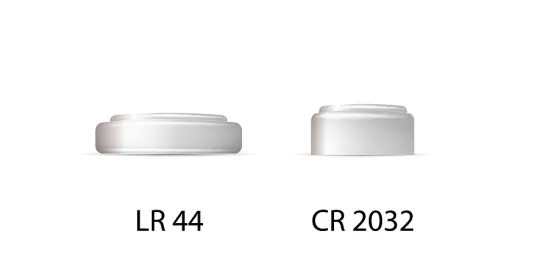On September 11, 2023, the Consumer Product Safety Commission (CPSC) voted to adopt sweeping safety requirements, pursuant to Reese’s Law, for button cell and coin batteries and products containing these batteries or designed to contain them. In a direct final rule, the Commission adopted ASNI/UL 4200A-2023 as the mandatory safety standard for button cell and coin batteries, which includes extensive construction, performance, labeling, and certification requirements. A separate final rule also mandates additional labeling requirements for these batteries and products containing them. The new requirements will be effective after March 19, 2024, although some of the affected products already must comply with the packaging requirements of the Poison Preventing Packaging Act (PPPA). Manufacturers of affected products should immediately prepare for compliance with the host of new construction, performance, labeling, and certification requirements to ensure compliance before the effective date.
At a glance:
- Reese’s Law, passed in August 2022, aims to protect children 6 years old and younger against risks associated with the ingestion of button cell or coin batteries.
- On September 11, 2023, pursuant to Reese’s Law, CPSC adopted ASNI/UL 4200A-2023 as the mandatory safety standard for button cell and coin batteries, as well as new mandatory labeling requirements.
- The new requirements apply broadly to not only button cell and coin batteries but also all consumer products containing them or designed to contain them.
- Under the final rules, affected products must also certify compliance with the new requirements.
- After March 19, 2024, all affected products manufactured or imported will have to comply with the new requirements.
- Given the extensive nature of the final rules, we recommend manufacturers of affected batteries and products start preparing immediately for compliance with them.
- In addition to the new rules, Section 3 of Reese’s law, effective now, requires button cell and coin batteries individually sold and packaged separately with a product to comply with the Poison Prevention Packaging Act (PPPA). Our previous blog post explains the PPPA requirement
Below we discuss in detail the extensive new requirements that impact manufacturers of affected batteries and products:
- New Mandatory Standard for Battery Safety and Labeling Requirements – Effective After March 19, 2024
Published on September 21, 2023, CPSC’s direct final rule adopts ASNI/UL 4200A-2023 as the mandatory safety standard for button cell and coin batteries and products containing them, and a separate final rule mandates additional labeling requirements. Both final rules apply broadly to products that contain button cell or coin batteries, whether pre-installed or packaged separately, and products that do not include a button cell or coin battery but are designed to use one or more of such batteries. The rules also apply to the “packaging of such consumer products and accompanying literature.”
The rules will be effective after March 19, 2024, 180 days after publication in the Federal Register. Due to the exhaustive nature of the rules, CPSC has already exercised its enforcement discretion to make the rules effective 180 days—instead of 30 days—after publication. Affected products manufactured or imported after March 19, 2024, will be subject to the rules.
The final rules include comprehensive construction, performance, labeling and certification requirements:
-
- Construction Requirements – The direct final rule requires that button cell or coin batteries must not become accessible or liberated when tested to a series of performance and accessibility tests. Under ASNI/UL 4200A-2023, requiring a coin or tool or two independent, simultaneous movements by hand to open a battery compartment addresses child access to the battery compartment. However, the rule also requires that accessing the battery compartment is senior-friendly.
- Performance Requirements – The final rule requires that products that are designed to or do contain button cell or coin batteries pass a litany of performance tests outlined in ASNI/UL 4200A-2023. These tests include crush, drop, impact, torque, and tension tests, among other ones, that must be performed under specific conditions.
- Labeling Requirements – Specific warning labels are required on the packaging of all button cell and coin button batteries, whether sold individually or packaged separately with a consumer product. Warning labels are also required on the packaging of and on consumer products with pre-installed batteries, as well as on the instruction manuals included with these products. Warning labels must meet the various specifications including about text size and placement, outlined in ASNI/UL 4200A-2023.
- Additional Labeling Requirements – On top of the labeling requirements included in ASNI/UL 4200A-2023, CPSC also approved a final rule with additional labeling requirements for affected batteries and products. The final rule requires all affected products to include specific warning labels, as well as warning statements that meet text size requirements based on the size of the front panel. The warning label must also include the contact information for the National Battery Ingestion Hotline.
- Certification – Importantly, the final rules require manufacturers of non-toy children’s products to receive a certification of compliance with the requirements from a third-party, CPSC-accepted laboratory. All other affected products must issue a general certificate of compliance (GCC), certifying that their products comply with the labeling and performance regulations they are subject to. Importantly, children’s toy products are exempt from Reese’s law, if they comply with ASTM F963.
In the coming months, CPSC may also adopt the requirements for required consumer notification that it proposed. These requirements would require manufacturers of affected products to publish specific battery safety information on their websites accessible to purchases.
Given the extensive nature of the final requirements and the time it takes to ensure full compliance and certification with them, we recommend manufacturers of affected batteries and products start preparing immediately for compliance with the final rules. Mintz’s attorneys are extremely knowledgeable of the new requirements and can develop a compliance plan tailored to the specific products and needs of each manufacturer.
- PPPA Packaging Requirement – Effective Now
Effective since February 23rd, 2023, Section 3 of Reese’s Law requires all button cell and coin batteries sold individually or packaged separately with a consumer product to utilize packaging that meets the requirements of the PPPA. Importantly, under Section 3, the PPPA requirement does not extend to consumer products that contain a pre-installed battery. The PPPA requirement is now in effect, and manufacturers of affected products must ensure full compliance with it.
Under the PPPA requirement, affected products must utilize child-resistant, senior-friendly packaging that is certified to meet the PPPA’s testing procedures. The PPPA outlines an extensive testing procedures for certifying products, including tests involving children and adults under specific conditions.
Manufacturers of affected products not currently in compliance with PPPA are immediately vulnerable.
Matthew Tikhonovsky, Mintz Project Analyst based in Washington D.C., also contributed to this article.





 />i
/>i

